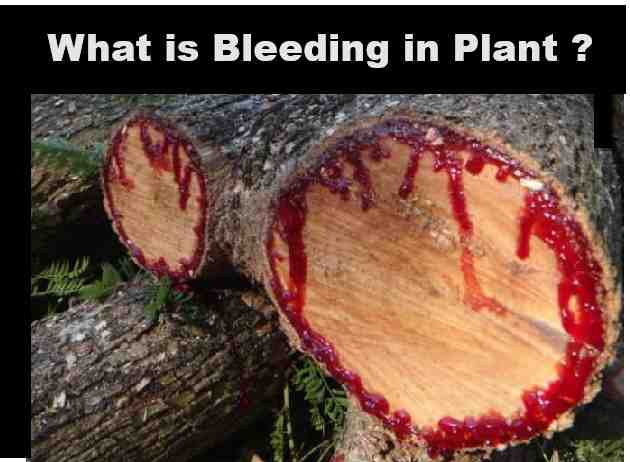Transpiration Class 10 Concise Descriptive Type Ans ICSE Biology Selina Solutions Ch-5. In this article you will get the solutions of Descriptive Type Questions as council latest syllabus. Visit official website CISCE for detail information about ICSE Board Class-10 Biology.

Transpiration Class 10 Concise Descriptive Type Ans ICSE Biology Selina Solutions Ch-5
| Board | ICSE |
| Subject | Biology |
| Class | 10 |
| Book | Selina Concise |
| Chapter-5 | Transpiration |
| Topics | Solutions of Descriptive Type Questions |
| Session | 2024-25 |
Solutions of Descriptive Type Questions on Transpiration
( Class 10 Concise ICSE Biology Selina Solutions Ch-5)
Que-1: Define the following terms:
(a) Transpiration
(b) Exudation
(c) Potometer
(d) Wilting
(e) Hydathodes
(f) Cuticle
Sol:
(a) Transpiration — Transpiration is the loss of water in the form of water vapour from the aerial parts (leaves and stem) of the plant.
(b) Exudation — The process by which plants lose water or other fluids along with dissolved substances directly in liquid form and not as water vapour is called exudation.
(c) Potometer — Potometer is a device that measures the rate of water intake by a plant and this water intake is almost equal to the water lost through transpiration.
(d) Wilting — The drying out, drooping and withering of the leaves of a plant due to inadequate water supply, excessive transpiration, or vascular disease.
(e) Hydathodes — Special pore-bearing structures present on the margins of the leaf to allow exudation are called hydathodes.
(f) Cuticle — Cuticle is a waxy layer secreted by the epidermis on the two surfaces of the leaf which prevents evaporation of water from the leaf surfaces.
Que-2: Distinguish between the following pairs:
(a) Stomata and Lenticels
(b) Guttation and Bleeding
(c) Transpiration and Evaporation
Sol:
(a) Difference between stomata and lenticels
| Stomata | Lenticels |
|---|---|
| They are minute openings in the epidermal layer of leaves. | They are minute openings on the surface of old woody stems. |
| Maximum transpiration occurs through stomata. | Lesser transpiration occurs through lenticels. |
(b) Difference between Guttation and Bleeding
| Guttation | Bleeding |
|---|---|
| It occurs from the edges of leaves by hydathodes in uninjured plants. | It occurs from any cut or injured part of a plant. |
| The exudate is mainly water with some dissolved mineral salts. | The exudate is mainly plant sap and sugars. |
| It occurs during early mornings or late nights. | It occurs at the time of injury. |
| It happens in certain plants like Banana, Nasturtium, Strawberry. | It occurs in all plants that have been cut or injured. |
(c) Difference between Transpiration and Evaporation
| Transpiration | Evaporation |
|---|---|
| It is the loss of water in the form of vapour from the aerial parts of the plant. | It is the loss of water from the surface of water bodies in the form of vapour. |
| It is a slow process. | It is comparatively a faster process. |
Que-3: Give reason/suitable explanation for each :
(a) Nerium loses less amount of water during transpiration.
(b) More transpiration occurs from the under surface of a dicot leaf.
(c) Transpiration increases with the velocity of wind.
(d) Leaves of some plants wilt during midday and recover in the evening.
(e) Guttation normally occurs during early mornings or late nights.
(f) Forests tend to bring more rains.
Sol:
(a) Nerium loses less amount of water during transpiration because they have sunken stomata that are covered with hair like structures called trichome.
(b) More transpiration occurs from the under surface of a dicot leaf because the number of stomata is more on abaxial (lower) side of leaf.
(c) Transpiration increases with the velocity of wind because when wind blows faster, the water vapour released during transpiration is removed faster and the area outside the leaf does not get saturated with water vapour.
(d) Leaves of some plants wilt during midday due to high rate of transpiration. They usually recover by evening as the loss of water is compensated by absorption.
(e) Guttation normally occurs during early mornings or late nights when there is least transpiration. The hydrostatic pressure built, forces out the excess water directly from the tips of veins in the leaf.
(f) Due to transpiration, huge quantities of water are released into the atmosphere by vast stretches of forests. Thus, transpiration increases the moisture in the atmosphere and brings more rain.
–: End of Transpiration Class 10 Concise Descriptive Type Ans ICSE Biology Selina Solutions :–
Return to : Concise Biology for ICSE Class 10 Selina Solutions
Please share with your Friends if helpful
thanks


